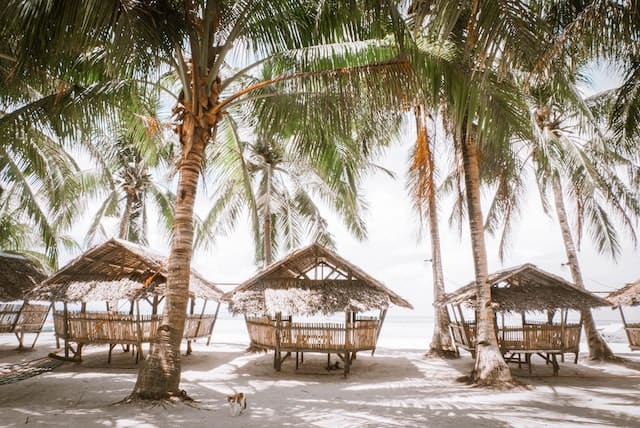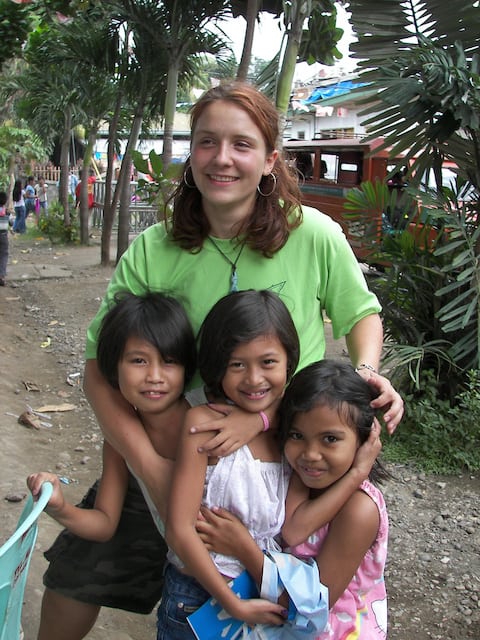Why I Paid to Volunteer in the Philippines

It is an age old debate: “should you have to pay to volunteer?” The media frenzy surrounding unethical and underhanded volunteering projects has throw this subject back in to question once again. With experts from left, right and centre offering up their own opinions on how local communities are being exploited by “voluntourists” who are seemingly happy to throw money into volunteering as a means to improve their CV, genuine volunteer projects, like the one I have been involved with in the Philippines, are under threat.
During my first visit to the Philippines, I worked in a government-run orphanage in Tacloban City, Leyte for five weeks in 2006 and yes, I paid a fee to volunteer. My visit was marred by my relatively unexpected arrival, the lack of a local home stay (the homes where they normally place volunteers were all full) and the fact that my project leader at the orphanage was away for the first week–which delayed my start.
The genuine volunteer projects out there aren’t about tourism or constructing a project purely to capture the volunteers’ hard earned cash, but about allowing visitors to go off the beaten track, away from the tourist trail and right into the heart of a culture and a community.
All these factors, coupled with a bout of culture shock, meant that I was in a vulnerable position and needed the support from local coordinators on the ground. I had this–both in the form of my homestay mother (we call them Nanay) and my coordinator at the volunteer centre. The project fee that I paid before travelling to the Philippines covered this cost and meant that when I finally did start my project at the orphanage, the staff did not experience an additional burden due to my cultural shock and need for extra care and attention, and that, in the 4-5 hours a day that I spent with these tiny children, I was being beneficial to the team at the centre.
Throughout my time at the orphanage, there were only two care workers often working 12-20 hour shifts each. While I was there I could relieve some of that burden, do some of the more time-consuming tasks like feeding, cleaning and playing with the children to give them more stimulation–the stimulation which, during those 4 weeks, certainly doubled in time for the children.
On the night before I left my homestay mother’s apartment, she said: “When you are in my house, you are like my daughter, my family. When you are here I look after you. When you are happy, I am happy.”
The project that I worked on would not be considered voluntourism; for me, the mish-mash word has a bad ring to it. The genuine projects out there aren’t about tourism or constructing a project purely to capture the volunteers’ hard earned cash, but about allowing visitors to go off the beaten track, away from the tourist trail and right into the heart of a culture and a community. Because the acclimatization process may be difficult in the beginning, the volunteer coordinators and the home stay arrangements are all the more valued.

Regarding the homestay, ladies out there – don’t panic! This is the one element that should be welcomed with open arms. My first volunteer experience was fantastic. I ended up staying with the local coordinator’s sister, Jan, who welcomed me into her home because I had nowhere else to go. It was Jan’s mum whom I called Nanay, who cooked for me every morning and evening, and it was Jan who was my rock when I first arrived. She taught me all the dos and the don’ts and treated me like family.
It’s four years later and now I’m back in the Philippines, this time to work for Kaya Responsible Travel, and I’ve been given a home stay in Bliss, along with the other volunteers. My Nanay there is called Solli and she’s the warmest and most caring woman. On the night before I left her apartment, she said: “When you are in my house, you are like my daughter, my family. When you are here I look after you. When you are happy, I am happy,” and this was true to the bone.
While one shouldn’t pay thousands to volunteer for a few weeks, don’t discount how much the volunteering fee may mean to the local communities.
Although I did not remember her, she remembered my face from four years before, which was around the time she first started accepting volunteers. In the years since, she has welcomed in over 66 volunteers, for which she receives her income (taken from the volunteers’ project fees). Prior to running a homestay, she had no extra means of income apart from selling rice at the local market sporadically, and she has two sons, a husband and a grandson still living at home (not to mention her four other children and 20 or so other grandchildren) to provide for.
Running a homestay has also given Solli’s life more meaning; she has pictures of every one of her volunteers on the table in the living room, she takes all of them to the airport when they leave, and more often than not, they both shed a tear! She still even receives birthday and Christmas cards from her first-ever volunteer. For a lone female traveller, the tales, the attention and the solace away from the hustling and bustling streets outside helps an enormous amount.
Why I Paid to Volunteer in the Philippines.
While in the Philippines, I have since met up with my first home stay, Jan. Her mum still remembers me and wants to cook for me again so I’ll be visiting her soon. There may be some projects out there that are focused on the wrong causes but for every one of those, there are hundreds more that are not. While one shouldn’t pay thousands to volunteer for a few weeks, don’t discount how much the volunteering fee may mean to the local communities.
In addition to helping communities develop their infrastructures and bring about local progress, volunteer projects lead to more impassioned and educated individuals in the world. Surely this can’t be a bad thing.
Why I Paid to Volunteer in the Philippines photo credit by Unsplash.








